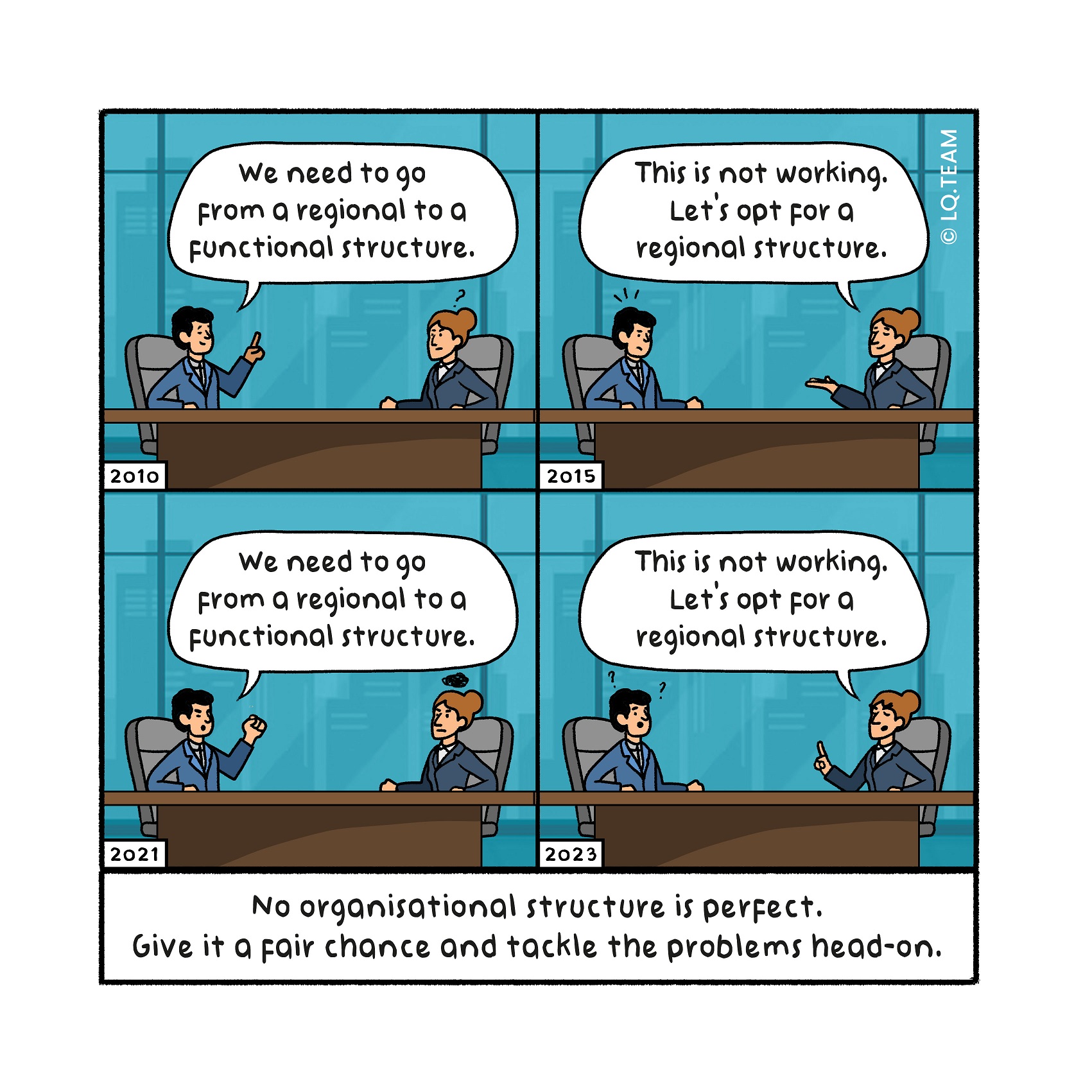
Nut to crack: How do you get a (new) organisational structure going?
Suppose you have introduced a new organisational structure, and six months later, you notice it’s not working correctly. People complain that it was poorly designed or the structure isn’t viable. In short, resistance is already high and growing. Going back to square one is not an option in your view. What do you do? How do you turn the tide?
Nutcracker: Face it; no organisational structure is perfect Perceptions about what the organisational structure will and will not bring are just as “true” in people’s minds as the actual problems that the structure causes. Therefore, look both the real and perceived issues straight in the eye, together with those responsible for a successful implementation. The example below illustrates how to do this in practice.
Nutcracker: Face it; no organisational structure is perfect
Perceptions about what the organisational structure will and will not bring are just as “true” in people’s minds as the actual problems that the structure causes. Therefore, look both the real and perceived issues straight in the eye, together with those responsible for a successful implementation. The example below illustrates how to do this in practice.
Real-life example: Change the focus, not the foundation
Peter has changed the organisational structure to a matrix structure to get the best results not only per market, but also in several markets combined. The new structure is criticised: it is said to not work, to make things unnecessarily complicated, to be unclear, and to slow execution down. Peter is disappointed but does not believe the structure has been given a fair chance.
Therefore, he does the following. He focuses the business leaders’ energy on getting the structure working. He does this by having them interviewed separately by an indepen dent consultant about the intended purpose of the organisational structure, the current blockages and the potential solutions. Then he brings the leaders together in a room. The consultant facilitates the discussion. Peter starts by explaining the original “why” of the structure change and addresses their responsibility to make the structure work. They then work through the list of issues, differentiating between perceived and actual problems; both are covered.
After a twoday work session, the sixteen people go home; they have found solutions for the genuine problems together, while the other problems have been judged to be a matter of perception. Six months later, people look back positively on this moment. It caused a shift. Most issues have disappeared, and where there are still problems, they are identified and resolved constructively.
Tip for change leader
Should you feel comfortable with constellations, it will only take a few minutes to cre ate an organisational constellation to clarify how the organisational structure works in practice. For example, keep it light and airy by working with Lego pieces, making people place them the way they experience that the organisational structure works in practice. So: what is the relative distance between players, who is next to whom, who is behind whom, and who is not actively involved? Give individuals space to explain their positions. This provides deeper insights much faster than you could typically achieve with words. If you want to spend more time on it, I recommend having this process guided by an expert.
Tip for change enabler
Don’t forget to consider the management meeting structure and the kpis. Very often, these are the cause of the problems in organisational structure. The management meet ing structure can be problematic. Because meetings have not been thoroughly revised after the organisation structure change, people are accidentally forgotten in discussions, or specific topics are not discussed with the right people. The kpis, if they are insuffi ciently adjusted, will send conflicting signals obstructing the smooth functioning of the structure.
Kernel: Making structure work without structural adjustment
When criticising the organisational structure, people quickly judge that the structure itself is the problem. This typically happens faster than necessary because the implementation hasn’t been given a fair chance. You prevent unnecessary structural adjustment by reducing the implementation risk in advance (see Challenge 31) and proactively focusing on getting the structure working when problems arise.
